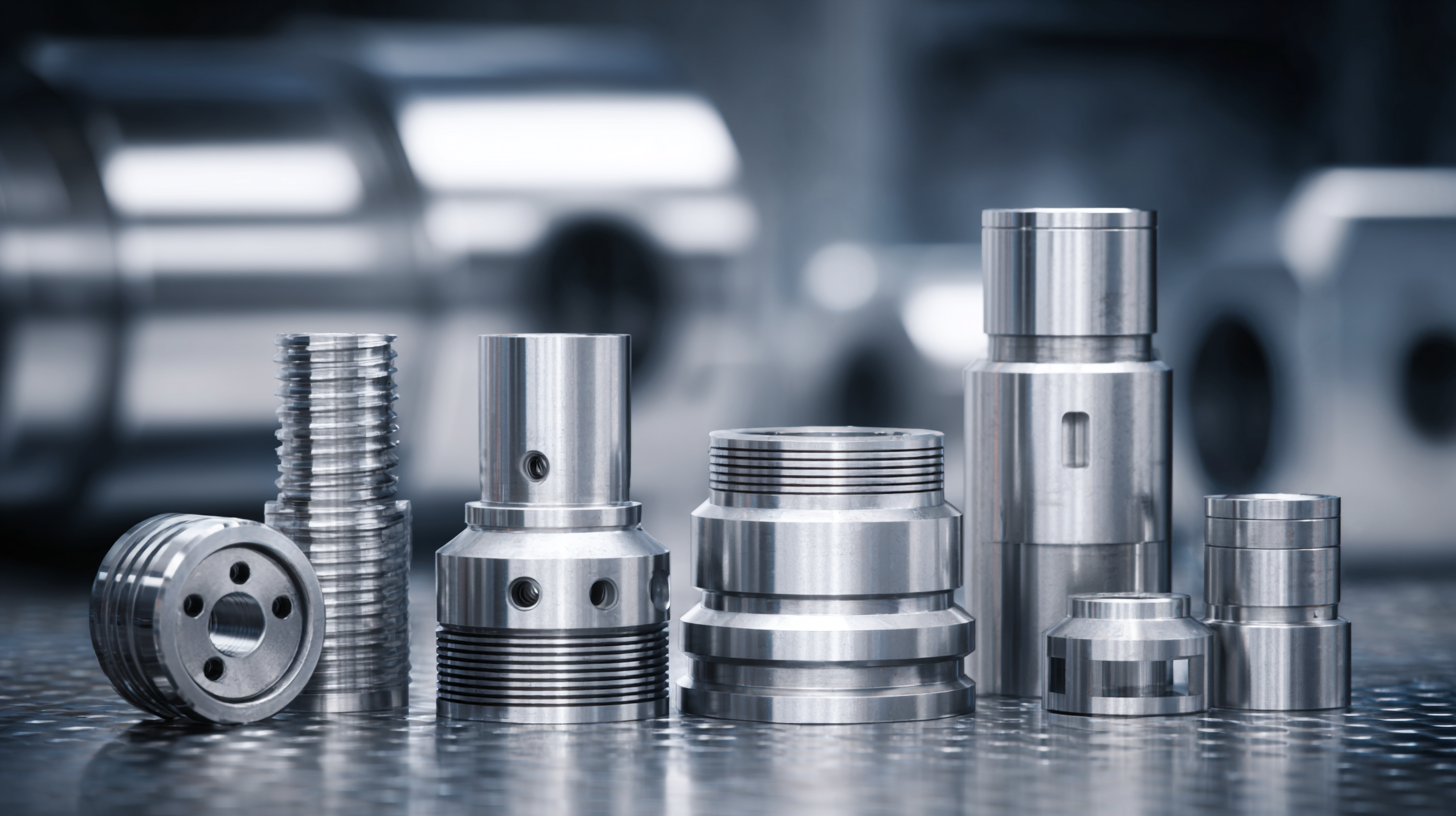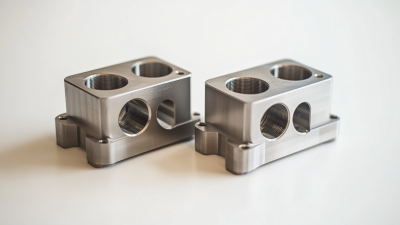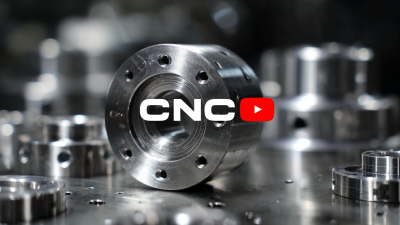 +86 180 0293 5268
+86 180 0293 5268






In the ever-evolving landscape of precision engineering and manufacturing, the importance of high-quality CNC milling parts cannot be overstated. According to a recent report by MarketsandMarkets, the global CNC machining market is projected to grow from $76.6 billion in 2020 to $107.2 billion by 2025, highlighting the rising demand for precision components across various industries including aerospace, automotive, and medical sectors. The shift towards automation and the necessity for enhanced manufacturing techniques further fuel this growth, with CNC milling parts playing a pivotal role in achieving the desired precision and efficiency.
CNC milling technology not only boosts production capability but also significantly enhances the quality of end products. With capabilities ranging from complex geometries to fine tolerances, CNC milling parts are essential in delivering the high standards required in modern manufacturing. A report by Grand View Research indicates that the precision engineering market is expected to reach $35.5 billion by 2027, emphasizing the critical role that CNC milling components will continue to play in advancing manufacturing techniques. As industries increasingly rely on precision engineering, understanding the best CNC milling parts available is crucial for manufacturers aiming to optimize their operations and meet stringent quality requirements.

CNC milling has revolutionized precision engineering by providing high accuracy and repeatability in manufacturing parts. According to a recent report by MarketsandMarkets, the CNC machine market is expected to reach $100 billion by 2026, growing at a CAGR of around 6.5%. This surge indicates a rising demand for advanced milling techniques, which are essential for producing intricate parts across various industries.

Precision milling techniques, such as 5-axis machining, allow for complex geometries and tighter tolerances than traditional 3-axis milling systems.
In addition, the use of specialized cutting tools and tooling strategies plays a critical role in enhancing the milling process. For instance, the incorporation of high-performance end mills can significantly increase productivity while maintaining superior finish quality. Research published in the International Journal of Advanced Manufacturing Technology demonstrated that optimized feed rates and cutting speeds can improve tool life by as much as 30%. Therefore, adopting these advanced CNC milling techniques not only elevates the quality of manufactured components but also enhances overall operational efficiency in precision engineering and manufacturing sectors.
CNC milling is a crucial component in precision engineering and manufacturing, and the choice of materials significantly impacts the quality of the final product. Various materials can be utilized in CNC milling, each offering unique benefits. Aluminum alloys, for instance, are favored for their lightweight properties and excellent machinability, making them ideal for components that require precision without added weight. Steel, known for its strength and durability, is commonly used for manufacturing parts that must withstand high stress and wear. Additionally, plastics such as Polycarbonate and Nylon are often selected for their versatility and ease of processing in applications where corrosion resistance is essential.
When milling precision parts, it's vital to choose the right tooling and techniques to enhance material properties. **Tip:** Always consider the compatibility of your milling tools with the chosen material; for instance, carbide tools are ideal for harder metals, ensuring cleaner cuts and longevity. Moreover, proper coolant usage can prevent overheating during the milling process, preserving the integrity of the material. **Tip:** Regular maintenance of your CNC machine can improve accuracy and consistency, reducing the risk of defects in your final parts. Choosing the right materials combined with effective milling strategies can elevate the quality of your precision engineering projects.
When selecting CNC milling parts for precision engineering and manufacturing, there are several key features to consider that can significantly influence both the performance and durability of your components. One of the paramount characteristics is material quality, which ensures that the parts can withstand the stresses of machining operations. For instance, reports indicate that the global CNC machine market is projected to grow from $101.22 billion in 2025 to $195.59 billion by 2032, driven by advancements in material science and engineering processes. High-quality materials such as aerospace-grade aluminum or titanium alloys are essential for producing components that meet stringent industry standards.
Another critical aspect to focus on is the precision and tolerance of the CNC milling parts. Parts with tighter tolerances are crucial for applications in sectors like aerospace or automotive, where even minor deviations can lead to significant failures. The health of the CNC milling market reflects the increasing demand for precision; it is expected that various segments, including end milling machines, will see substantial growth through the decade, reflecting broader industry trends. As manufacturers seek to optimize their processes, investing in top-quality CNC milling parts with advanced features will be key to ensuring operational efficiency and product reliability.

The landscape of precision engineering and manufacturing is undergoing a significant transformation, driven by innovative CNC milling technologies. Recent advancements in automation, modular design, and artificial intelligence are reshaping how industries approach CNC machining. As these technologies evolve, they enable manufacturers to adopt more flexible, efficient production methods, integrating principles of the circular economy that emphasize sustainability.
The integration of AI and robotics into CNC programming is particularly noteworthy, allowing for enhanced precision and productivity. This shift not only streamlines operations but also opens new avenues for innovation in various sectors, including architecture and consumer goods. As educational initiatives, such as scholarships for aspiring CNC professionals, gain momentum, the future of manufacturing looks promising. Students equipped with advanced skills in digital fabrication are essential in bridging the gap between traditional craftsmanship and modern technological capabilities, ensuring that the industry continues to advance in scope and efficiency.
The comparative analysis between CNC milling parts and traditional machining methods highlights significant advancements in efficiency and precision. Traditional machining often relies heavily on manual operation and less advanced automation, which can introduce variability in production quality. In contrast, CNC milling utilizes pre-programmed software to control the machinery and automate processes, resulting in consistent outcomes and reduced human error. Recent developments in toolpath generation techniques, such as the integration of point cloud data and advanced denoising methods, further enhance the efficiency of CNC machining, allowing for quicker setup times and smoother operation.
As the CNC machine market continues to expand—projected to reach $195.59 billion by 2032—the demand for ultra-precise manufacturing is driving the adoption of CNC technologies across various industries. The evolution of CNC through automation and AI promises to revolutionize manufacturing paradigms, offering solutions that traditional methods simply cannot match. This growing reliance on CNC milling not only increases output but also enables the production of complex geometries with unrivaled accuracy, positioning it as the preferred choice for precision engineering and manufacturing.
| Part Type | Material | Precision (mm) | Production Time (hrs) | Cost ($) | Comparison to Traditional Methods |
|---|---|---|---|---|---|
| Bracket | Aluminum | 0.01 | 2 | 50 | More precise and faster to produce |
| Gears | Steel | 0.02 | 3 | 75 | Higher accuracy than conventional methods |
| Spindles | Titanium | 0.01 | 5 | 120 | Significantly reduces machining time |
| Housings | Aluminum | 0.015 | 4 | 80 | Improves consistency over traditional methods |
| Connectors | Bronze | 0.02 | 1.5 | 40 | Greater flexibility in design |
| Bushings | Polymer | 0.01 | 2.5 | 30 | Lower material waste compared to traditional methods |
| Plates | Stainless Steel | 0.025 | 6 | 95 | More complex shapes achievable |
| Covers | Aluminum | 0.02 | 3.5 | 70 | Enhanced durability vs. machined parts |
| End Mills | Carbide | 0.015 | 4.5 | 150 | Precision milling capabilities |
| Adapters | Aluminum | 0.01 | 2 | 45 | Faster production than traditional techniques |






